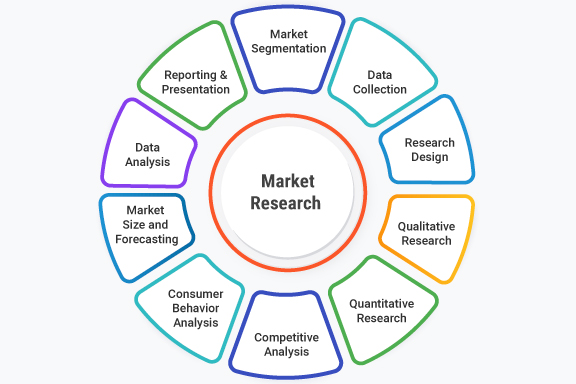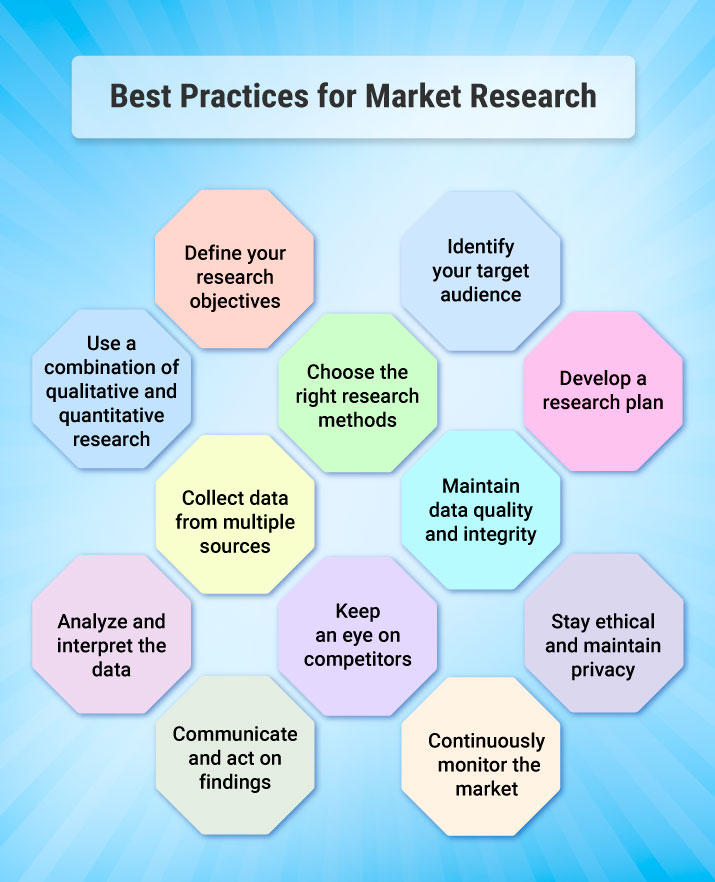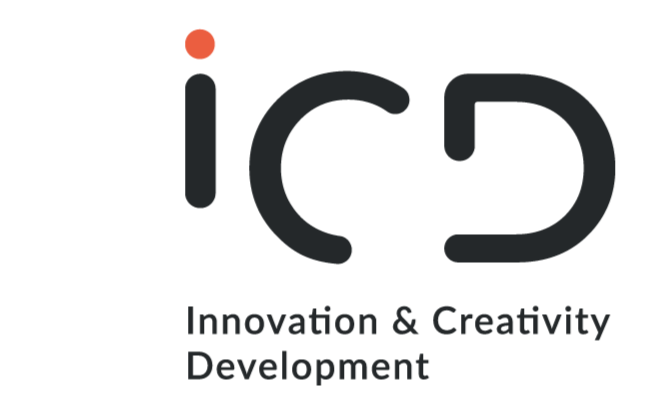
In a business environment where change is constant and competition is fierce, market research provides the clarity organizations need to make confident, informed decisions. It allows businesses to understand their customers, competitors, and industry landscape—enabling them to innovate with purpose, reduce risk, and uncover new opportunities for growth.
This article explores the fundamentals of market research, including its definition, core components, types, methods, process, and best practices for modern businesses.
What Is Market Research?
Market research is the structured process of collecting, analyzing, and interpreting information about a target market. It helps companies understand customer needs, market demand, industry dynamics, and competitor activity.
Ultimately, market research serves as the foundation for informed strategic decision-making, allowing businesses to identify growth opportunities, develop relevant products or services, and refine their go-to-market strategies.
Core Components of Market Research
A complete market research approach includes the following essential elements:
- Market Segmentation – Classifying customers into distinct groups based on demographics, behaviors, or preferences to tailor messaging and offerings.
- Data Collection – Gathering data via primary methods (e.g., surveys, interviews) or secondary sources (e.g., reports, databases, government data).
- Research Design – Planning the research approach, defining objectives, choosing methodologies, and selecting sampling strategies.
- Qualitative Research – Using interviews, focus groups, and observations to explore motivations, perceptions, and attitudes in-depth.
- Quantitative Research – Employing surveys and statistical analysis to produce measurable insights at scale.
- Consumer Behavior Analysis – Examining how consumers discover, consider, and choose products or services.
- Competitive Analysis – Benchmarking competitor positioning, pricing, and strategy to uncover gaps or differentiation opportunities.
- Market Sizing and Forecasting – Estimating the total addressable market, growth potential, and emerging trends.
- Data Analysis – Using analytical tools and techniques (e.g., regression, clustering, segmentation) to extract meaning from raw data.
- Reporting and Insight Communication – Synthesizing findings into actionable insights and strategic recommendations.
Types of Market Research
Market research typically falls into two main categories:
- Primary Research – Firsthand data collection via surveys, interviews, or observations tailored to specific business needs. It provides original insights but often requires more time and budget.
- Secondary Research – Analysis of existing data, such as industry reports or public studies. This is faster and more cost-effective, but may be less targeted.
Both types are often used together to maximize insight while managing resources.
The Market Research Process: 6 Key Steps
A well-executed research process follows these key stages:
- Define the Objectives
Clarify what you want to learn—such as market size, consumer preferences, or product performance. - Design the Research Plan
Choose methods, define your sample, and build your research tools (e.g., surveys, guides, interview frameworks). - Collect the Data
Gather insights using primary (interviews, focus groups) and/or secondary sources (databases, analytics tools). - Analyze the Data
Identify patterns, correlations, and themes. Use statistical tools or qualitative coding techniques. - Interpret the Findings
Turn data into insights—what does it mean for your business strategy, marketing, or product roadmap? - Present and Apply Results
Deliver a clear, actionable report with recommendations that guide decision-making and next steps.
Real-World Market Research Examples
- Nike uses customer satisfaction surveys post-purchase to refine product designs and improve customer experience.
- Procter & Gamble conducts focus groups to test reactions to new beauty products before launch.
- Coca-Cola continuously tracks Pepsi’s marketing and product strategy through competitive analysis.
- Netflix monitors social media to measure sentiment about new shows and adjust content strategy in real-time.
- HubSpot uses A/B testing to compare marketing variations and optimize campaign performance.
Market Research Methods
Market research methods fall into two broad categories:
- Qualitative Methods:
- Focus Groups
- In-Depth Interviews
- Case Studies
- Observational Research
These methods explore motivations, perceptions, and emotions behind consumer decisions.
- Quantitative Methods:
- Online and Offline Surveys
- Polls
- Net Promoter Score (NPS)
- Customer Satisfaction (CSAT) Scores
These approaches collect large-scale numerical data for statistical analysis and forecasting.
Best Practices for Effective Market Research

To maximize the value of your research, follow these proven principles:
- Clarify Research Objectives – Know exactly what you’re trying to discover.
- Define the Target Audience – Be precise about who you want insights from.
- Choose Appropriate Methods – Select tools that fit your goals, timing, and budget.
- Combine Qualitative and Quantitative – Blend empathy with evidence for a well-rounded view.
- Collect from Multiple Sources – Mix primary and secondary data for added depth.
- Ensure Data Integrity – Use validated tools and consistent collection methods.
- Keep Research Ethical – Respect privacy, gain consent, and be transparent.
- Use the Right Tools – Employ advanced analytics and visualization tools where possible.
- Translate Data into Action – Focus on insights that lead to clear next steps.
- Monitor Trends Continuously – Make research an ongoing activity, not a one-time event.
At ICD, We Help You Turn Market Research Into Strategic Advantage
At ICD, we help organizations leverage market research not as a static report—but as a living tool for innovation, strategy, and growth. From designing custom research plans to extracting powerful insights and translating them into concrete action, our team supports your journey from data to decision.
Whether you’re exploring a new market, launching a product, or refining your value proposition, we help you understand what matters most: your customers, your competitors, and your opportunities.
Let’s make your research work harder. Contact us to get started.
